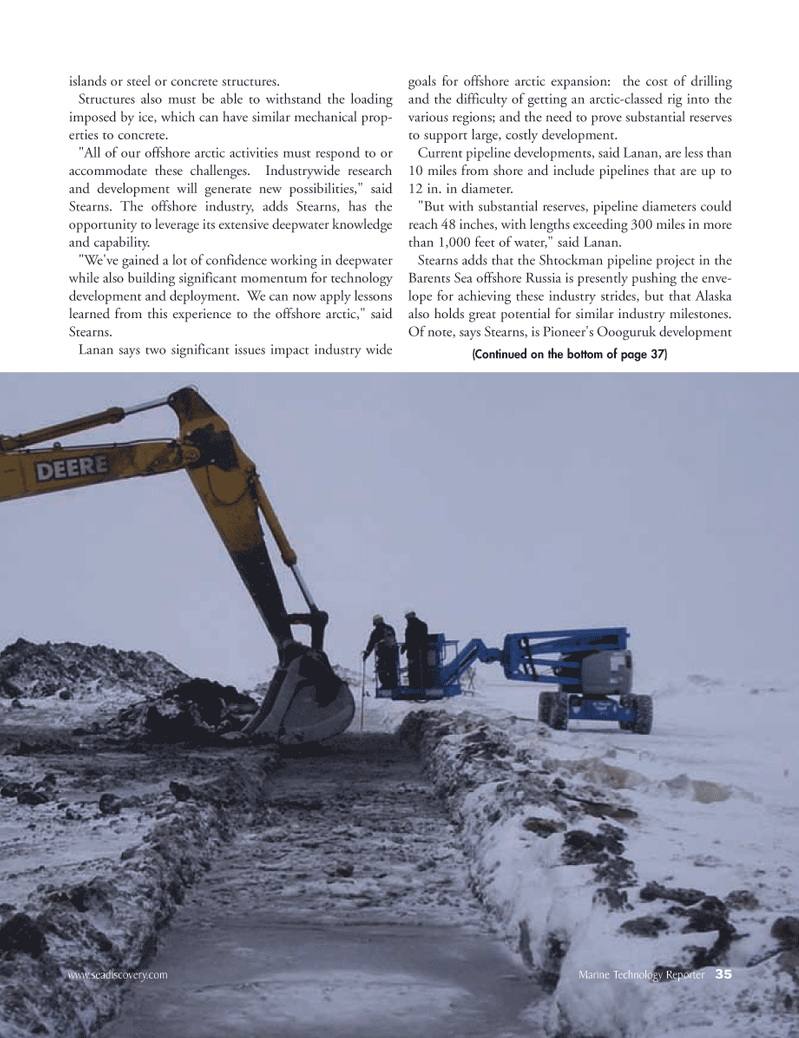
Page 35: of Marine Technology Magazine (July 2006)
Underwater Defense: Port & Harbor Security
Read this page in Pdf, Flash or Html5 edition of July 2006 Marine Technology Magazine
islands or steel or concrete structures.
Structures also must be able to withstand the loading imposed by ice, which can have similar mechanical prop- erties to concrete. "All of our offshore arctic activities must respond to or accommodate these challenges. Industrywide research and development will generate new possibilities," said
Stearns. The offshore industry, adds Stearns, has the opportunity to leverage its extensive deepwater knowledge and capability. "We've gained a lot of confidence working in deepwater while also building significant momentum for technology development and deployment. We can now apply lessons learned from this experience to the offshore arctic," said
Stearns.
Lanan says two significant issues impact industry wide goals for offshore arctic expansion: the cost of drilling and the difficulty of getting an arctic-classed rig into the various regions; and the need to prove substantial reserves to support large, costly development.
Current pipeline developments, said Lanan, are less than 10 miles from shore and include pipelines that are up to 12 in. in diameter. "But with substantial reserves, pipeline diameters could reach 48 inches, with lengths exceeding 300 miles in more than 1,000 feet of water," said Lanan.
Stearns adds that the Shtockman pipeline project in the
Barents Sea offshore Russia is presently pushing the enve- lope for achieving these industry strides, but that Alaska also holds great potential for similar industry milestones.
Of note, says Stearns, is Pioneer's Oooguruk development www.seadiscovery.com Marine Technology Reporter 35 (Continued on the bottom of page 37)
MTR#6 (33-48).qxd 7/11/2006 9:07 AM Page 35

 34
34

 36
36
